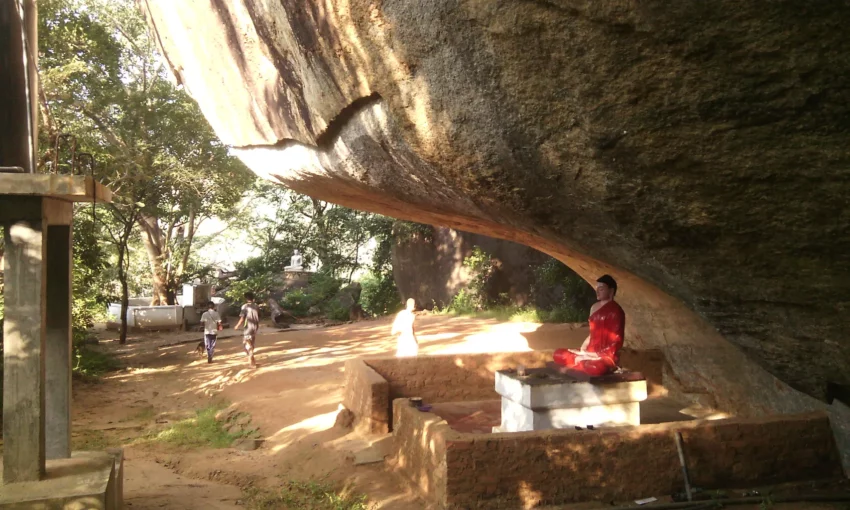Get your dose of History via Email
The Origins and Establishment of Samangala Aranya Senasanaya
The Samangala Aranya Senasanaya, also known as the Samangala Hermitage, stands as a reflective abode for Buddhist monks in Sri Lanka. Situated in the Uva Province, near the town of Wellawaya, it was established in the early 20th century on a 15 hectare plot of land. With its origins tracing back to 1911 AD, this hermitage was officially founded by Kudakongaskada Sonuttara Thero, a monk of the Amarapura Nikaya. The founding year coincides with the support of Sir Robert Heath Lock—a British colonial administrator illustrating an era where religious and colonial histories intersected amidst the ebb and flow of Sri Lanka’s socio-political climate.
Historical Significance and Architectural Splendor
Famed for its rich archaeological significance, Samangala is not merely a space for spiritual solitude but also a site where history and architecture meet. The land upon which it is sited was once part of a vast Buddhist Monastic complex, hinting at a thriving religious community in antiquity. Ruins of an ancient stupa, a hot water fountain, and a stone inscription bear testament to a bygone era of great architectural ingenuity and spiritual devotion. These remnants are inscribed with Brahmi script, shedding light on a period in Sri Lankan history dating back to before the 10th century AD.
Geology and Natural Surroundings
The hermitage’s geology further adds a fascinating dimension to its allure. It is situated amidst the craggy outcrops of a type of granitic gneiss—a common feature in the island’s natural landscape, known for its tortuously metamorphosed granitic layers. The rugged terrain is enveloped by a diverse natural environment, characterized by rich biodiversity, including endemic species indicative of the island’s unique ecological dynamics.
The Pillar Inscriptions: Epigraphical Insights
Among the archaeological elements found at Samangala, the most illuminating are the pillar inscriptions. These historical artefacts yield critical insights into the ancient Sinhalese script and language. A thorough examination of such inscriptions offers invaluable information regarding the socio-religious fabric of early Sri Lankan societies. Moreover, the script is closely related to the Edicts of Ashoka, which points to significant historical exchanges between Sri Lanka and other regions of the ancient Buddhist world.
Conservation Measures and Present Day Use
Recognizing the importance of preserving such a culturally and historically significant site, the government of Sri Lanka has taken strides in conservation efforts. In 2013, under Gazette number 1829/32, the location has been formally designated as an archaeological site. This protection ensures that the hermitage, its surrounding relics, and the encompassing natural habitat remain shielded from the encroachments of modern development.
Today, the Samangala Aranya Senasanaya continues to serve as a haven for monks seeking a life of renunciation and meditation. The tranquil setting and spiritually charged atmosphere are conducive to the practice of Dhamma—the Buddha’s teachings. The monks occupying this humble locale lead lives of simplicity and austerity, adhering to the monastic code, the Vinaya, thus upholding a tradition that has continued uninterrupted for millennia.
In Summary
The Samangala Aranya Senasanaya stands as a beacon of Sri Lanka’s rich heritage. It encapsulates the historical continuity between the country’s ancient Buddhist traditions and its present-day quest for spiritual solace. As an archaeological and ecological treasure, it offers a unique window into the nation’s past, providing scholars and the devout alike with an emblem of cultural identity and historical resonance. Its sacred grounds, monumental inscriptions, and the continuity of monastic life all contribute to its esteemed status—a testament to Sri Lanka’s enduring spiritual landscape.

